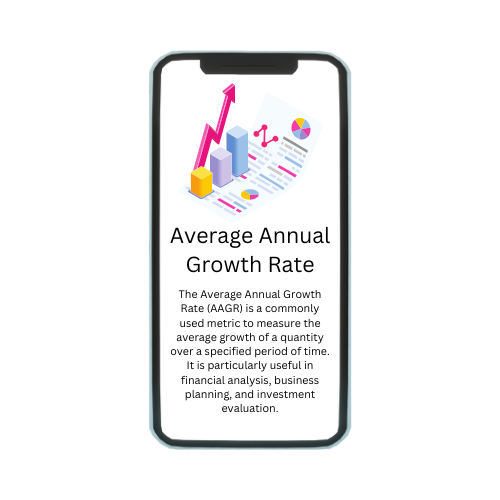Animal spirits, a term first coined by the renowned economist John Maynard Keynes, refers to the non-rational, emotional factors that influence economic decisions and behaviour. Unlike the traditional economic model based on rational expectations, animal spirits emphasize the role of human psychology, sentiment, and mood swings in shaping economic outcomes. These psychological factors, such as optimism, fear, and herd mentality, can drive investors to make decisions that are not purely based on fundamental analysis. In essence, animal spirits capture the ebbs and flows of market sentiment, affecting everything from consumer spending to stock market fluctuations. Understanding and managing these emotional undercurrents is crucial for policymakers and investors alike, as they play a significant role in shaping economic cycles, market volatility, and the overall stability of financial systems.
What Are Animal Spirits?
Definition and Origin
The concept of animal spirits, coined by economist John Maynard Keynes during the 20th century, refers to the non-rational factors that influence economic decisions and behavior. Unlike the traditional economic theories that assume rational decision-making based on perfect information, animal spirits highlight the role of emotions, instincts, and psychological factors in shaping economic outcomes. These factors include optimism, pessimism, confidence, and fear, which can lead to decisions that are driven by sentiment rather than logic. Keynes introduced this concept to explain why economic activity fluctuates more than predicted by traditional economic models. According to him, understanding and managing these animal spirits are crucial for understanding economic fluctuations and designing effective economic policies. Today, the concept of animal spirits remains relevant in economics and finance, providing insights into market behavior and the dynamics of economic cycles.
Characteristics of Animal Spirits
Animal spirits, as conceptualized by economist John Maynard Keynes, encompass several key characteristics that distinguish them from rational economic behavior:
- Emotional Influence: Animal spirits are driven by emotions such as optimism, pessimism, and fear, rather than by rational calculations or perfect information. These emotions can lead to exaggerated market swings and economic fluctuations.
- Herd Mentality: Investors and consumers often exhibit a herd mentality during periods of high animal spirits, where they follow the actions of others rather than making independent decisions based on their own analysis.
- Non-Rational Behavior: Unlike the rational expectations theory, which assumes that individuals act in a way that maximizes their utility based on all available information, animal spirits acknowledge that decisions can be influenced by irrational impulses and psychological biases.
- Impact on Decision-Making: Animal spirits affect economic decisions such as investment choices, consumer spending, and savings rates. High animal spirits can lead to speculative bubbles in asset prices, while low animal spirits can result in economic stagnation and reduced confidence.
- Volatility: Markets influenced by animal spirits can experience increased volatility, as sentiment-driven decisions can lead to rapid and sometimes unpredictable changes in asset prices and economic indicators.
Animal Spirits in Finance and Economics
Animal spirits play a crucial role in finance and economics, influencing various aspects of economic behavior and market dynamics:
- Behavioral Economics Perspective: In economics, animal spirits represent the emotional and psychological factors that drive decision-making. They contrast with the rational expectations theory, emphasizing that economic agents may act based on sentiment rather than pure rationality.
- Impact on Investor Behavior: In financial markets, animal spirits can drive investor behavior, leading to speculative bubbles or market crashes. For example, during periods of high optimism, investors may engage in speculative trading, driving asset prices above their fundamental values.
- Consumer Confidence: Animal spirits also influence consumer confidence, affecting consumer spending patterns. High levels of optimism can lead to increased spending, while pessimism can result in reduced consumption, impacting overall economic growth.
- Business Cycles: They are closely linked to business cycles, contributing to periods of economic expansion and contraction. Changes in animal spirits can exacerbate economic fluctuations, leading to booms and busts in the economy.
- Policy Implications: Policymakers monitor animal spirits to gauge economic sentiment and adjust policies accordingly. For instance, central banks may use interest rates to manage animal spirits and stabilize financial markets.
- Market Volatility: Animal spirits contribute to market volatility, as sentiment-driven decisions can lead to rapid changes in asset prices and financial indicators.
What Are Some Examples of Animal Spirits?
Animal spirits manifest in various forms across economic and financial contexts, influencing decision-making and market outcomes:
- Speculative Bubbles: Perhaps the most well-known example is speculative bubbles in asset markets, such as the dot-com bubble of the late 1990s. During this period, excessive optimism and a herd mentality led investors to bid up the prices of internet-related stocks far beyond their intrinsic values. This irrational exuberance eventually led to a sharp market correction and significant financial losses.
- Housing Market Booms and Busts: Another example is the housing market cycles, where periods of high optimism and easy credit can fuel rapid increases in home prices. These booms are often followed by busts when sentiment shifts, leading to foreclosures, declining property values, and economic downturns.
- Fear-Driven Sell-Offs: In times of crisis or uncertainty, animal spirits can drive fear-driven sell-offs in financial markets. For instance, during the COVID-19 pandemic, widespread fear and uncertainty led to a rapid decline in stock prices as investors reacted to the potential economic impact of the virus.
- Herding Behavior: Herding behavior among investors is also a clear example of animal spirits. When investors follow the actions of others without independently assessing risks and opportunities, it can amplify market movements and lead to inefficient pricing of assets.
- Consumer Sentiment: On the consumer side, animal spirits influence consumer sentiment and spending. High levels of consumer confidence can lead to increased spending, boosting economic growth, while low confidence can result in reduced spending and economic slowdowns.
- Impact on Startups and Innovation: In the startup ecosystem, animal spirits can drive entrepreneurial activity and innovation. During periods of high optimism, investors may fund speculative ventures, some of which may succeed spectacularly while others fail.
Animal Spirits Enter the 21st Century
Animal spirits, as conceptualized by economist John Maynard Keynes, have continued to play a significant role in shaping economic behavior and market dynamics in the 21st century. In the digital age, technological advancements and globalization have amplified the speed and impact of animal spirits on global financial markets. The interconnectedness of global markets has facilitated the rapid spread of sentiment-driven decisions, leading to increased market volatility and the potential for systemic risks. The advent of social media and real-time news dissemination has further accelerated the transmission of animal spirits, as information and sentiment can spread rapidly among investors and consumers alike. Moreover, the rise of algorithmic trading and high-frequency trading has introduced new dynamics to how animal spirits manifest in financial markets, with automated systems reacting to sentiment signals at lightning speed. Policymakers and economists continue to grapple with the challenges posed by animal spirits, seeking to understand their impact on economic stability and to devise strategies to mitigate their adverse effects. In summary, while the core concept of animal spirits remains rooted in human psychology and behavior, its manifestation and influence have evolved significantly in the 21st century, reflecting the changing landscape of global finance and economics.
Conclusion
In conclusion, animal spirits represent the non-rational, emotional factors that influence economic decisions and behavior, as articulated by economist John Maynard Keynes. These psychological impulses—such as optimism, fear, and herd mentality—play a crucial role in shaping economic cycles, market volatility, and overall financial stability. From speculative bubbles in asset markets to consumer sentiment and the dynamics of business cycles, animal spirits underscore the limitations of traditional economic models based solely on rational expectations. In the 21st century, technological advancements and globalization have heightened the impact and speed with which animal spirits can affect global financial markets, presenting both challenges and opportunities for policymakers and investors alike. Understanding and managing animal spirits is essential for mitigating risks, fostering economic growth, and promoting sustainable financial systems. Moving forward, continued research into the behavioral aspects of economics will be vital in developing more robust models and policies that account for the complex interplay between human psychology and economic outcomes.
Frequently Asked Questions(FAQs)
Animal spirits are difficult to quantify precisely due to their emotional and psychological nature. However, economists use various indicators, such as consumer confidence surveys, to gauge their impact.
Policymakers often use monetary and fiscal policies to stabilize markets and manage the effects of animal spirits on the economy.
Animal spirits influence economic decision-making by affecting consumer spending, investor behavior, and overall market sentiment.



